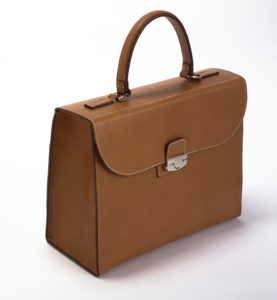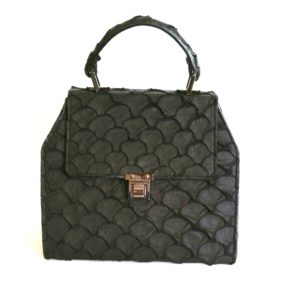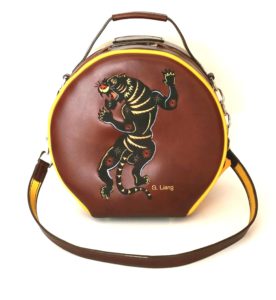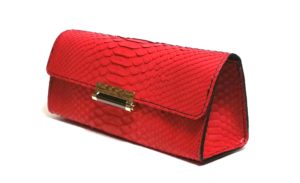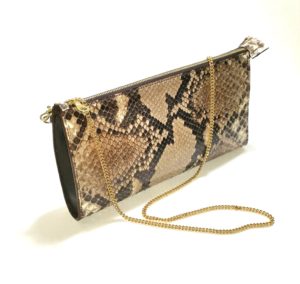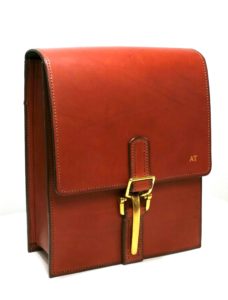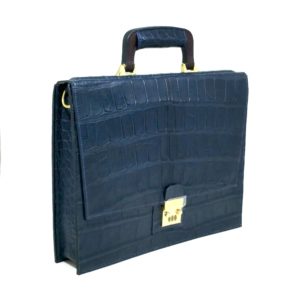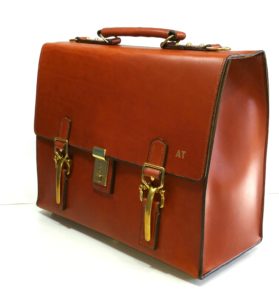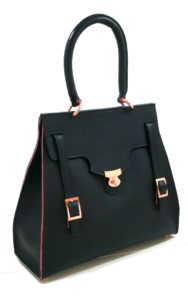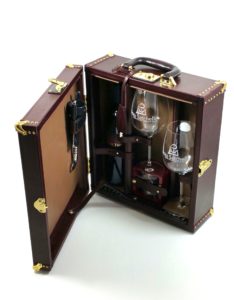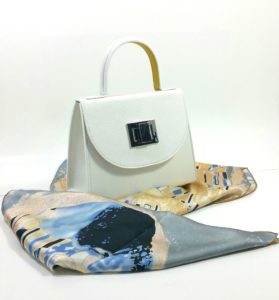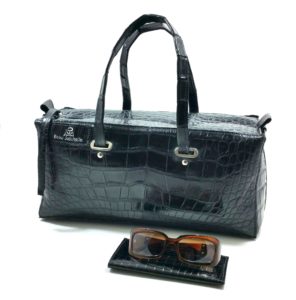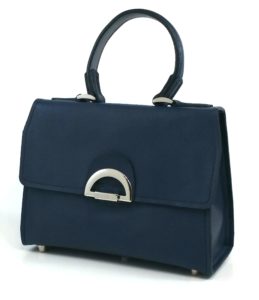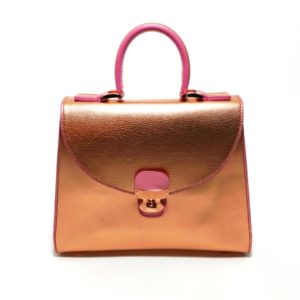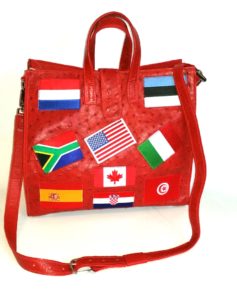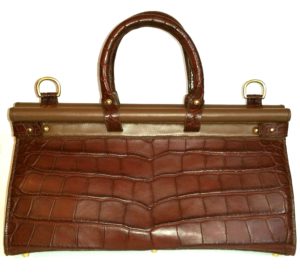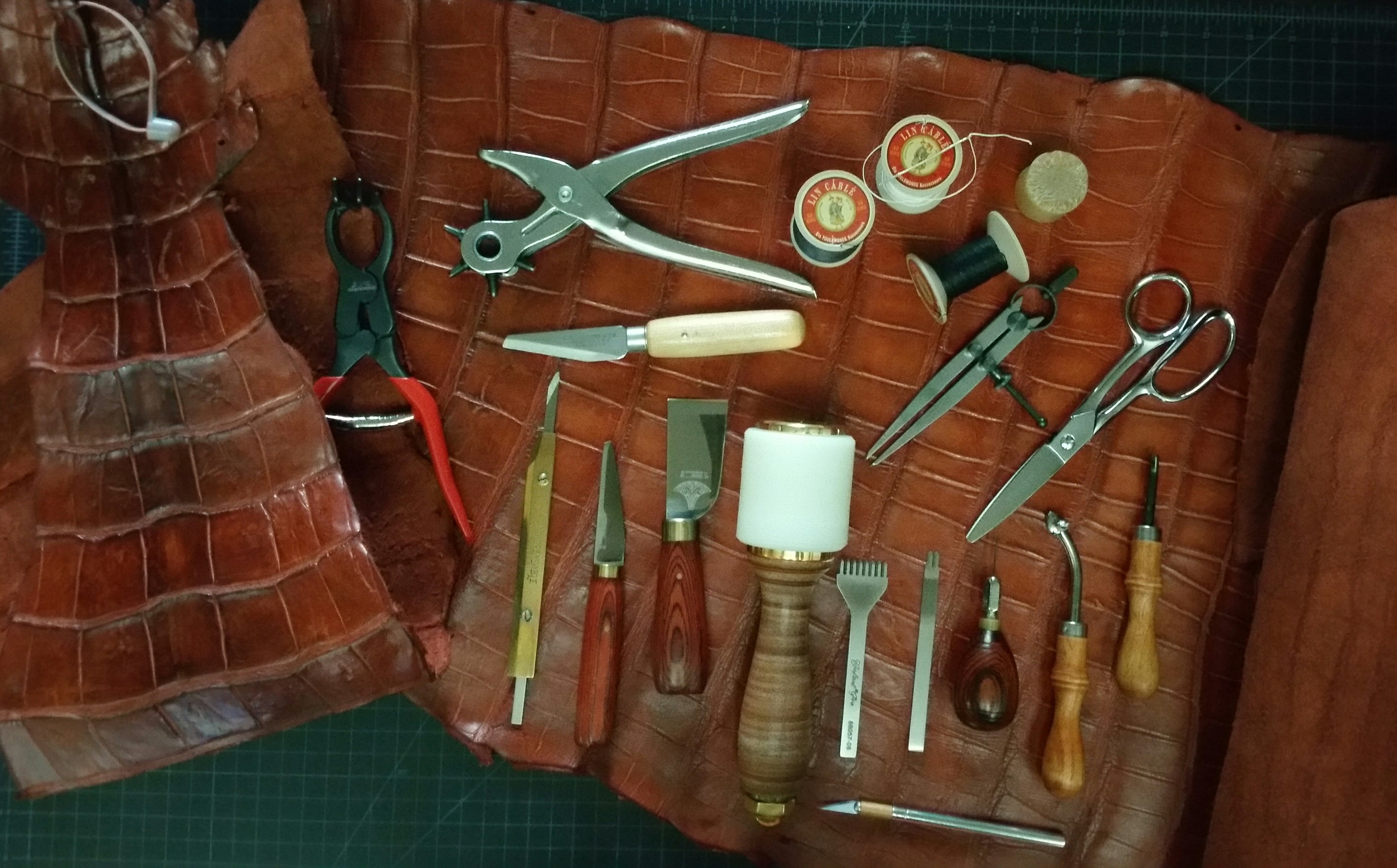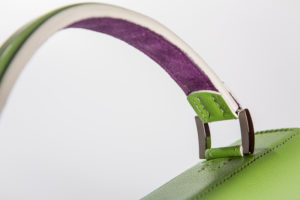A typical question our new customers ask is just what is the difference between leather bags being sewn on a sewing machine versus by hand. Compared to over a century ago, there are now only a relatively small number of high-end leather brands that continue to produce products by hand. In accommodating the demands of the buying public, most designer bag brands have acquiesced to mass production of inexpensive multiple products which affect quality but can pump out trendy looks.
A master artisan will take days, if not weeks, to construct a piece because of the intricate processes required in building a timeless, superior product.
Not to take anything away from designers who mass produce high-end bags but there is a certain delight and opulent pleasure in knowing the bag you carry was created with meticulous artistry and exceptional tools by one craftsperson.
Our clients understand and appreciate the amount of effort and training that goes into hand sewing leather accessories. Not only does a Master Artisan have to understand and perfect the harmonious relationship of stitching thread to leather, but also becomes skilled with the different precision tools used in building a bespoke bag.
Although a leather craftsperson’s studio can overflow with a variety of tools, his or her toolkit entails these basics:
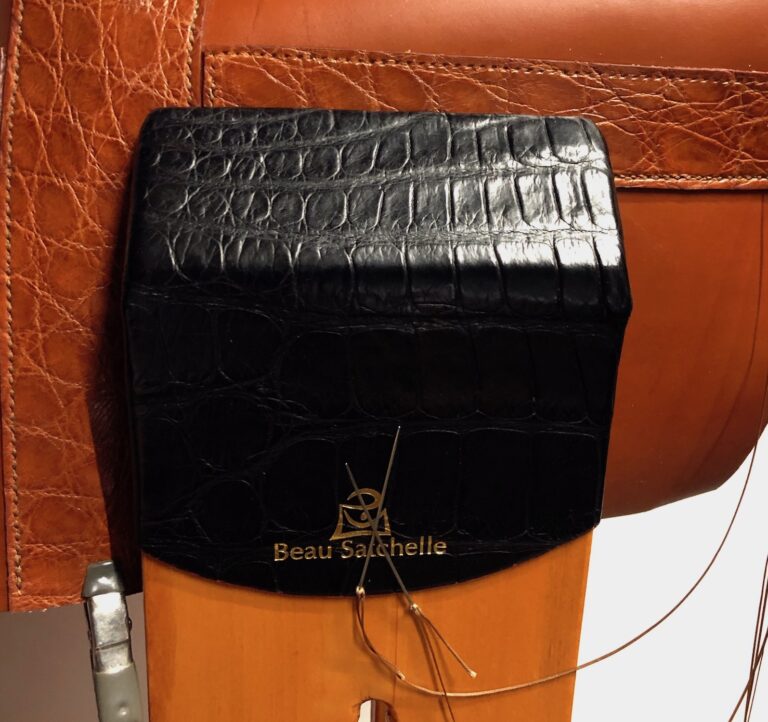
Stitching Horse or Pony
This tool is used to control the handling of the leather as is being sewn and eliminate excessive handling. Made out of wood planks as arms, leather is placed in between the planks’ jaws and clamped into place. Professionals will have a custom horse (which can have a seat added) or pony (smaller than the horse made to be placed on a chair and held by the person’s weight) made at their specific height for optimal comfort as many hours at a time will be dedicated to stitching. The two other types of tools used in holding leather for stitching are a table clamp or a stitching clam (used for smaller items).
A critical element added to the planks is a piece of leather attached to the edges at the top of the plank to protect and prevent impressions on the leather being sewn.
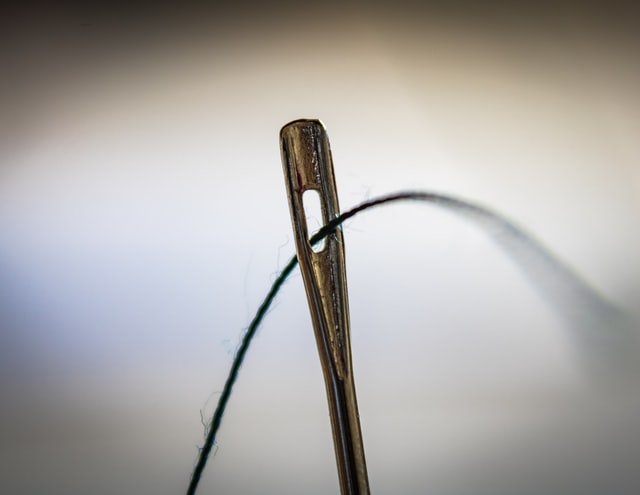
Stitching needles
Unlike sewing needles used on a machine or by hand which are pretty sharp to penetrate the material, the larger leather stitching needles’ tips are dull because the holes are made with awls or chisels. The typical sewing process leather is called saddle stitching in which 2 needles criss cross thread through each punched hole.
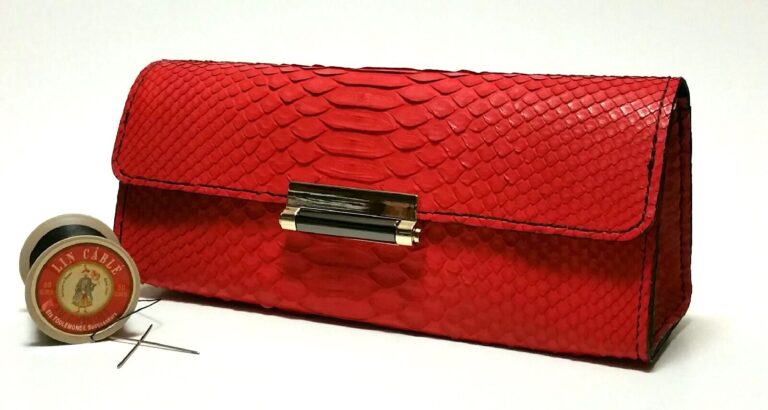
Thread
The types of thread can impact the outcome of a finished leather project. Man-made waxed nylon and polyester thread can be burned lightly to seal the ends. On the other hand, natural linen thread that does not melt has to be pulled intact back through the final holes to secure the thread in place. Beeswax is used to coat the thread to ensure an easier pull through the holes of the leather.
Leather cutters
Cutting leather requires sharp tools Depending on the artisan’s preference of cutting tools, the top choice is an effectively sharp utility or craft knife used for cutting thinner leather. When cutting leather, most artisans will use self-healing cutting mats to protect the knives from dulling easily and also protect the work surface underneath.
When raw leather arrives at our studio, depending on the thickness, particular parts of the leather edges will need to be thinned to give an accessory a more polished look when sewing two pieces of leather together or folding an edge. A skiving knife is a perfect tool used to shave off pieces of leather, although it also can be used for making general cuts.
There are specialized tools used in cutting and skiving including round knives rotary cutters (picture a really sharp pizza cutter) for cutting long lines of leather, round knives for detailed curved cuts,
One other specialized tool called a beveler is used to round off or slope square leather edges. A technique that is subtle to the untrained eye, yet adds to the beauty of the design.
Groover/Creaser
A groover is used to create channel lines on the leather to serve as a guide in punching the stitching holes. It also serves as a creaser that creates decorative finished lines, another indicator of hand-sewn leather products as opposed to sewing machine techniques.
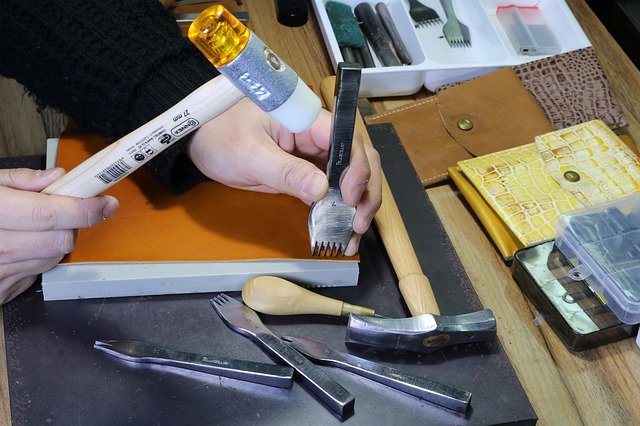
Punching tools
Pricking irons and diamond chisels resemble forks with extremely sharp prongs made from high-quality steel with varying widths. Artisans will select pricking irons based on the size of the project. Irons range from single (for corners) to 2 prongs (for small projects including key holders and cardholders) to 4, 6, 8, and 10 prongs (used to get the most accurate straight stitch lines more efficiently).
A master leather craftsman uses a small rubber mallet hammer to strike the head of the pricking tool to punch holes usually on scrap leather, Japanese sewing mats, Poly cutting mats or a piece of granite.
The punching tools are needed to create holes through the leather for the thread to pass through. The closer the holes the more precision is applied to the stitching process.
The biggest difference in hand stitching in particular saddle stitching is the pricking irons direct the stitches into an ever so slight diagonal slant as opposed to straight lines sewing machines produce.
A stitching awl is used to widen and/or create stitching holes and the tip is either round or diamond-shaped.
As with learning the rhythms and tautness of stitching thread, it takes a number of years to train and practice hole punching to ensure the stitches are straight and uniform.
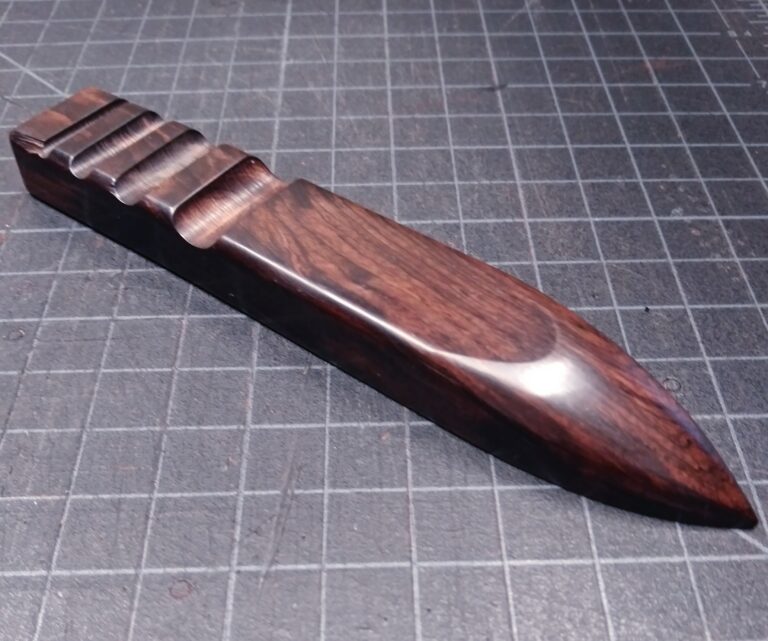
Edging tools
With handcrafted leather products, you will notice the edges are either rolled, covered with leather strips, kept raw, or burnished.
Artisans use specific tools to slick the edges of sewn leather creating a polished finish.
If performed correctly, it seals out dirt and moisture from entering the leather.
There are professional leather artisans who choose not to burnish, preferring to leave a raw look, however, Beau Satchelle insists our luxury accessories demand polished.
A wood edge burnisher or slicker which looks like a kitchen resin pestle is used to crush herbs and spices in a mortar bowl, except it has several carved width grooves to accommodate the thickness of leather. Using manual friction, the edge burnisher melts loose fibers on the edge of the leather creating a slick surface that won’t fray. Using a hand burnisher takes a lot of time and can be tiring, but for leather purists, this is the truest technique in handcrafting leather.
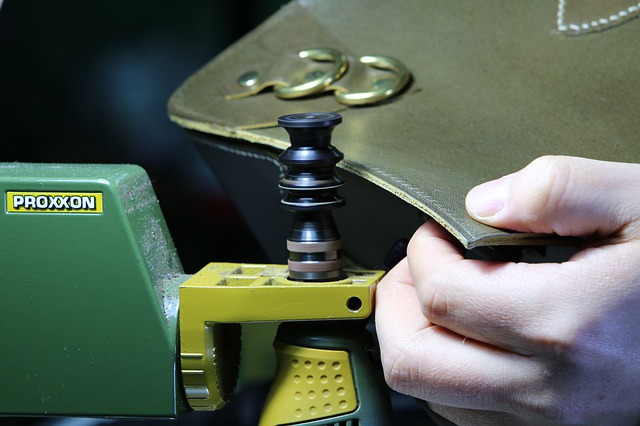
Yet, artisans have turned to other automated hand tools for burnishing the edges including a multi-slot wood burner attached to a drill bit or an electric edge burnisher tool which makes this tedious process more quick and efficient
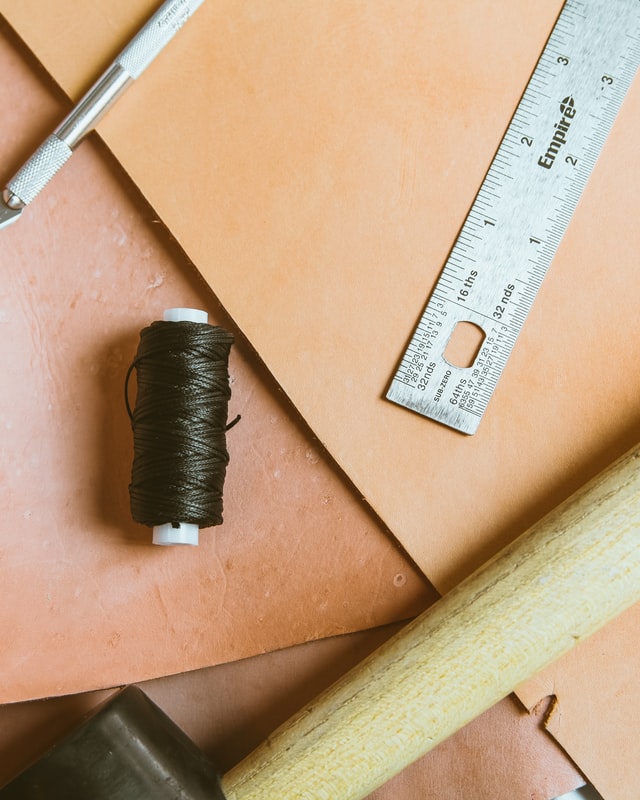
A skilled master artisan will have a collection of multiple tools in each category mentioned above to handle any type of project. Most of the tools will be made from the finest and most durable steel and wood that are produced in the USA, Germany, France, China, South Korea, Japan, and South Africa. Keep in mind that perfecting the use of these tools takes thousands of hours of training and practice to result in refined luxury products. Admirers and owners of our hand-stitched products appreciate the superior craftsmanship that goes into the smallest details of hand-stitched products requiring specialized tools. -AJ
Share your thoughts in the comment section below or on Twitter.
Thank you to the following photographers perfect visual contributions to this blog!
Sunbeam Photography – Needle and thread
Hueng Soon – auto edge burnisher
Bozhin Karaivanov – sewing machine
Dane Deaner – leather tools
Heung Soon – Pricking Iron and Mallet
SHARE POST
Customer Favorites
